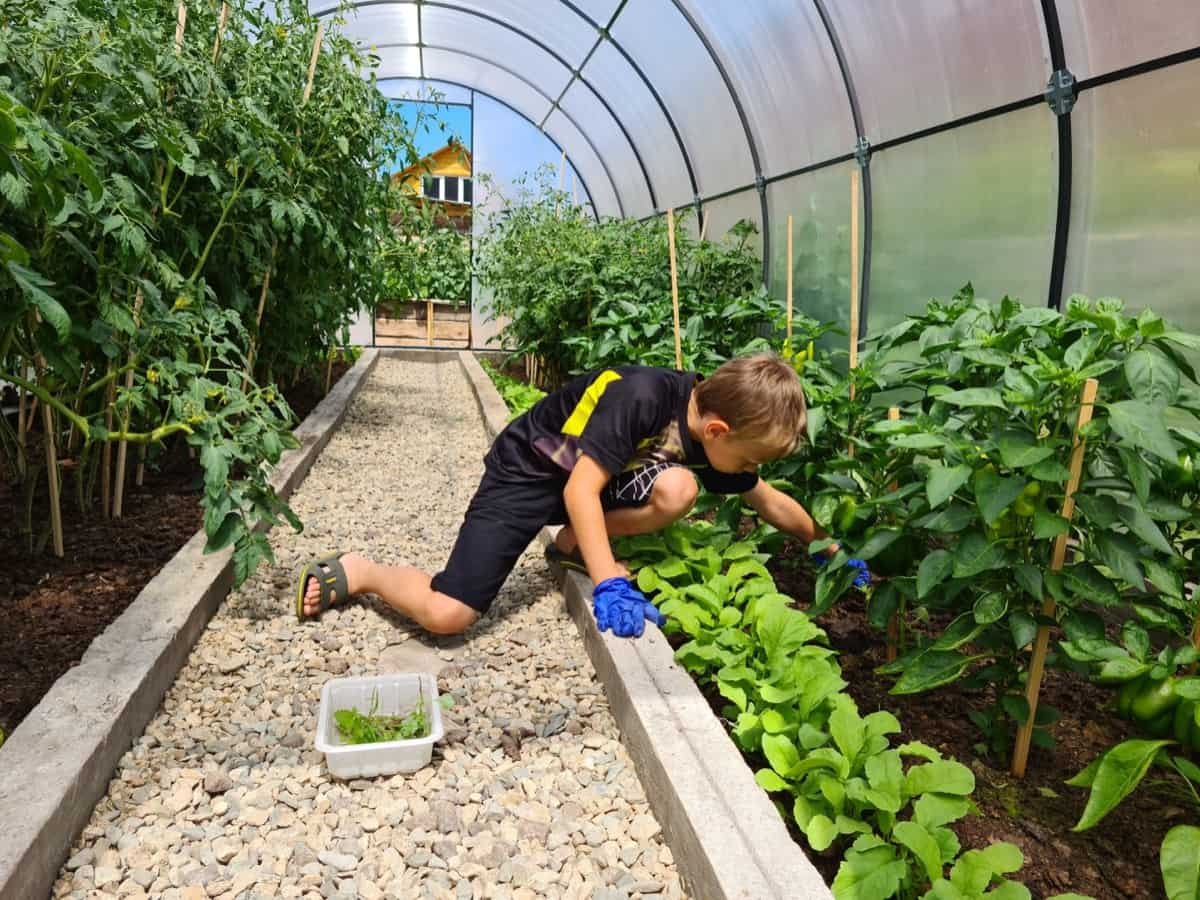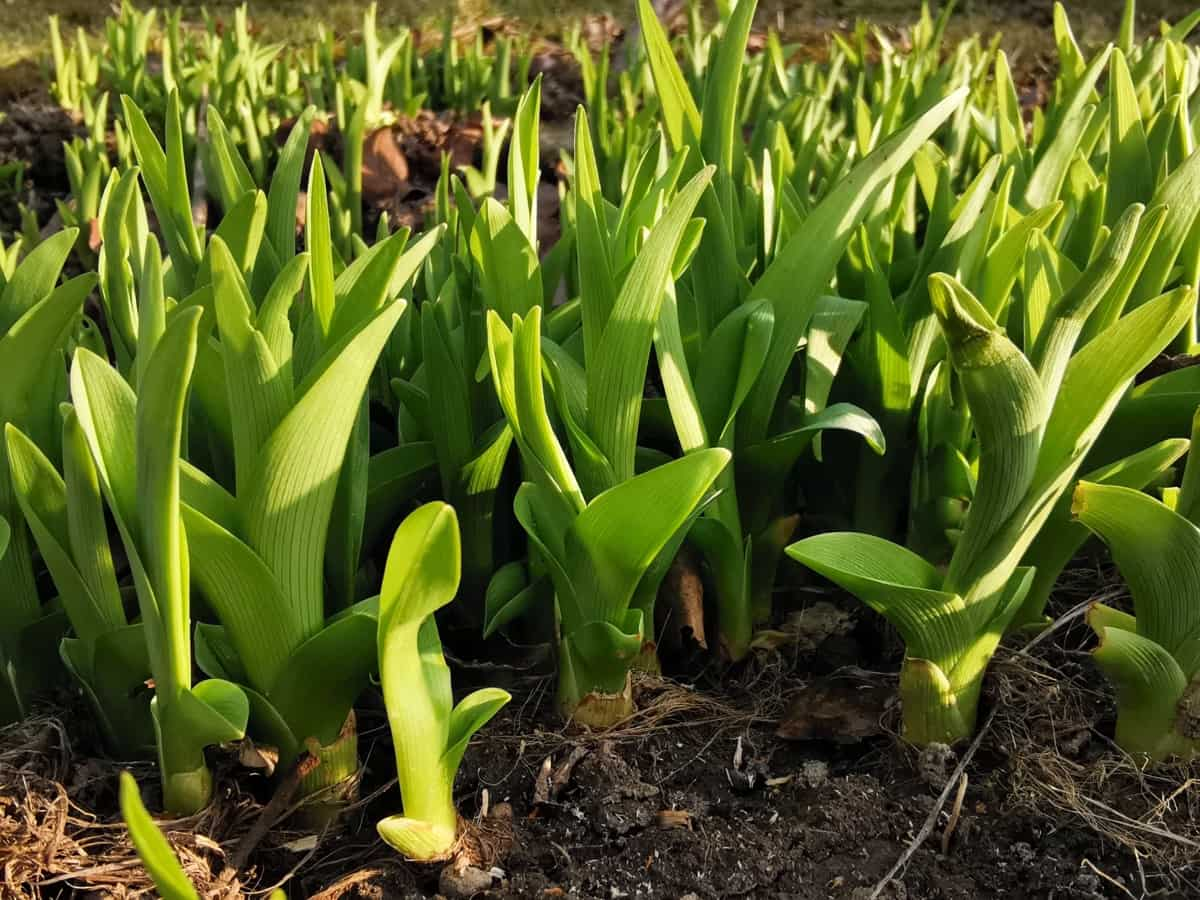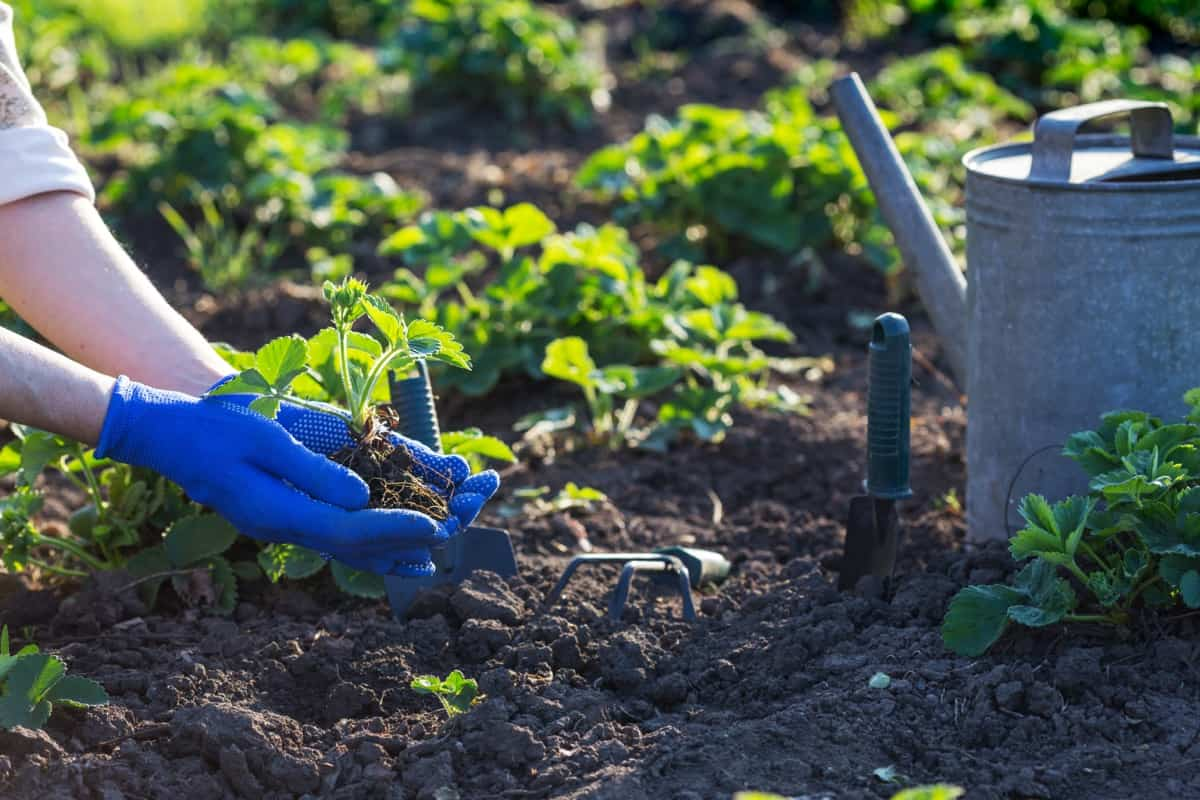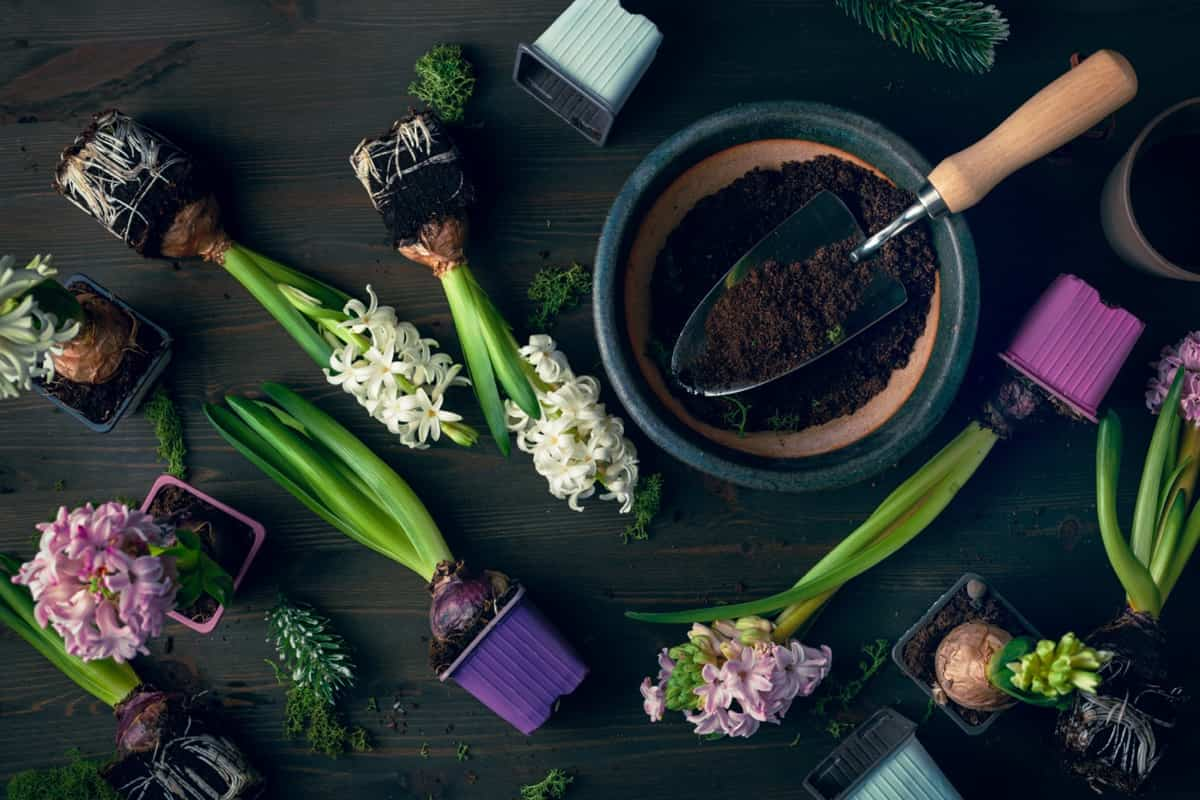Remember a few key things when giving your houseplants the best chance to survive the winter. Winter can be tough for houseplants, but they can survive with the right care and attention. Keeping your plants in a well-lit area, providing adequate nutrition and hydration, and protecting them from extreme temperatures are just some tips to ensure your houseplants remain healthy during winter.

Winter can be tough for houseplants, but with the right protection and care, you can help them survive until springtime. Take the time to choose appropriate plants for your environment and provide adequate protection against extreme temperatures and weather conditions. Your houseplants will stay healthy throughout the winter months. You’ll have a beautiful indoor garden all year round with proper care.
How to Know If Your Houseplant Needs Protection?
When the weather begins to cool and the days grow shorter, many of us begin to think about protecting our outdoor plants from the cold. At the same time, most houseplants are tropical or subtropical and therefore used to warm weather; a few come from temperate or even arctic regions and can suffer in the winter months if they’re not protected.
Dropping leaves is one of the most common signs that a plant is unhappy. If your plant is shedding more leaves than usual, it’s probably because it’s not getting enough light or because the temperature is too cold. Move it to a brighter spot and protect it from drafts. Winter can be tough on houseplants, but knowing the signs of cold stress and taking steps to protect them is an excellent way to ensure that your plants thrive all year round.
Before winter arrives, know which plants tolerate colder temperatures and which ones need extra protection. If you have any doubts about whether your houseplants need protection from winter, keep an eye out for discoloration or yellowing leaves and slow growth, indicating that the plant needs help surviving during cold weather. Taking the time to prepare now will guarantee beautiful blooms come springtime.

Top 12 Winter Care Tips for Houseplants
Cut Down on Water
Water is the most important nutrient for plants, and they need it to grow. However, during the winter months, plants don’t require as much water as they do during spring and summer. Too much water can harm your plants. When you water your plants, ensure the soil is dry before you water it again. Stick the finger in the soil to check. Your plant doesn’t need more water if the top soil is dry, but the bottom is still moist.
Let Your Plants Rest
It’s important to give your plants a rest during the winter months. This means reducing watering and fertilizing. Let the soil dry before watering, and only water when the plant shows wilting. By giving your plants a rest during the winter, you’ll help them stay healthy and thrive come springtime.
Avoid or Dilute Fertilizer
Fertilizer can be very harmful to houseplants if it is not used properly. Excess fertilizer can damage the plant. It is best to avoid using fertilizer altogether or diluting it before applying it to your plants. Fertilizers are unnecessary for most houseplants and can do more harm than good. If you fertilize, use a very diluted solution and apply it sparingly.
Clean and Trim Plants Before Bringing Them In
It’s important to clean your plants before bringing them inside for the winter. Use a soft brush to remove accumulated dust or dirt on the leaves. You should also trim back any dead or dying leaves, as well as any branches that are touching the ground. This will prevent pests and diseases from coming inside your plants. You can also use a mild soap and water solution if your plants are dirty.

Be sure to rinse the soap off completely afterward. Once your plants are clean, trim off any dead or dying leaves. This will help them look their best and stay healthy throughout the winter. In addition to watering your plants less frequently, you should also remember to clean their leaves. Dust and dirt can accumulate on the leaves, blocking light and causing the plant to become unhealthy. Use a soft cloth to remove dust and dirt from the leaves gently. You can also use a leaf blower on a low setting to remove stubborn dirt.
Don’t Repot Until Spring
If you can, resist the urge to repot your houseplants in the winter. Wait till spring when the plant is actively growing. Repotting during the winter can shock the plant, and it’s already trying to survive in less-than-ideal conditions. If you have a houseplant looking worse for wear, you may be tempted to repot it. However, it’s best to wait until spring if possible. Winter is difficult for plants; they need all the energy to survive. Repotting them will stress them out and could do more harm than good.
Build an Indoor Window Box for Maximum Sunlight
When giving your houseplants the best chance of surviving the winter, one key factor is ensuring they get enough sunlight. If you have a south-facing window, that’s great, but if not, you can still boost your plants by building them an indoor window box. Find a sunny spot in your home and measure the width of the windowsill. Then, cut a piece of plywood to that size and sand down the edges. Next, use screws or nails to attach two small L-brackets to the back of the board; these will be used to hang the window box on the windowsill.
Now it’s time to add some drainage holes. Drill four or five evenly spaced holes in the bottom of the box, then line them with a layer of gravel. This will help to prevent waterlogging and ensure that your plants always have access to drainage. Finally, fill your window box with potting mix and plant your chosen plants. Water well and place it in front of your sunny window. You’ve created an indoor space perfect for giving your plants all the sun they need to thrive throughout winter.
Avoid Drafts and Breezes
One of the biggest challenges during winter is keeping your houseplants warm enough. Most plants are tropical and used to warmer climates so they can struggle in the colder months. The best way to keep your plants warm is to avoid drafts and breezes. If you have a plant near a window, close the curtains or blinds at night to insulate them from the cool air outside. You can open them up in the daytime to let in some sunlight.

You might also consider moving your plants away from doors or vents blowing cold air. Another way to help your plants stay warm is to group them. Plants can create their microclimate and help each other stay warmer. So, if you have a few plants struggling in the cold, try grouping them and see if that makes a difference.
Use a Humidifier
If you have houseplants, you may need a humidifier to keep them healthy during the winter. Dry air can cause leaves to brown and drop, making plants more susceptible to pests and diseases. A humidifier adds moisture, which will help your plants stay healthy and thrive. Heaters can dry out the air, making it difficult for plants to thrive. Position your plants away from heat sources like vents or fireplaces if possible. Alternatively, you can use a humidifier to help add moisture back into the air.
Bring Plants Inside Before the Temperature Drops
Most houseplants are tropical or sub-tropical, so they’re not used to cold weather. Bringing your plants inside is a good idea when the temperature outside starts dropping. This will protect them from the cold and help them to stay healthy. You may need extra precautions if plants are particularly sensitive to the cold. For example, you might want to keep them in a warm room or a grow tent with a heat lamp.
Watch Out for Pests
Pests can be a big problem for houseplants, especially in the winter. Look for chewed leaves, webbing, or eggs. If you see any pests, remove them by hand or with a pesticide. Keep your plants healthy by giving them the proper care and nutrients. Healthy plants are less likely to be damaged by pests. Be sure to clean up any fallen leaves or debris from around your plants. Pests can hide in the potting mix or the leaves and stems of the plant, and they can quickly destroy a plant if left unchecked.

Some common pests include aphids, whiteflies, spider mites, and mealybugs. To prevent pests from becoming a problem, inspection is key. Look closely at your plants every week, especially under the leaves where pests like to hide. You can use insecticidal soap to help keep pests away. It’s also important to quarantine new plants before adding them to your collection. This will help ensure that any pests hiding on the new plant don’t have a chance to spread to your other plants.
Avoid Too Much Heat
Avoiding too much heat when caring for houseplants in the winter is important. Overheating can cause leaves to turn yellow, drop off, and encourage pests and diseases. The ideal temperature for most houseplants is between 15 to 20°C. If you can’t provide this level of heat, try grouping plants so they can create their microclimate, or place them near a south-facing window. You may also need to increase humidity around your plants if the air is dry.
For Short Days, Consider a Grow Light
For short days, consider a grow light. Many houseplants, with long and bright days, originate from the tropics and subtropics. When these plants are brought indoors during winter, they often experience a period of adjustment known as plant stress. One way to help your houseplants adjust to their new environment is to provide them with a grow light.
Grow lights are available in various shapes, sizes, and colors, so you can choose one that will fit your needs. Choose a grow light that emits full-spectrum light, providing your plants with the widest benefits. Place your grow light about 12 inches away from your plants and leave it on for 8 to 12 hours daily. With proper care, your plants should thrive all winter long.

Conclusion
Remember a few key things when caring for your houseplants during the winter. Move them closer to a window or add a light source. Water your plants regularly, but be careful not to overdo it; overwatering can be as harmful as underwatering. Don’t forget to fertilize plants that need extra nutrients to get through the colder months. And finally, watch out for pests and diseases. These are more common in wintertime. These simple tips can help your plants survive and even thrive in winter.
- Gongura Seed Germination and Planting Methods
- Cabbage Seed Germination and Selection
- Broccoli Seed Germination and Selection
- Asparagus Seed Germination and Variety Selection
- Seasonal Flower Gardening: Best Practices for Spring, Summer, Fall, and Winter
- How to Grow Hibiscus from Flower
- Plantation Ideas for Home Decoration: A Beginners Guide
- Flower Garden Designs and Layouts for Beginners
- Planting and Spacing Techniques in Papaya: A Beginner’s Guide
- Growing Gold: Essential Techniques for Planting Pineapples
- How to Make Kalanchoe Plant Bushy: Home Remedies and Solutions
- 11 Reasons Why Your Gardenia is Not Blooming: Home Remedies and Solutions
- Eco Elegance: The Guide to Designing a Drought-Tolerant Landscape
- Gardening on a Slope: Strategies for Hillside Landscaping
- Nourish and Flourish: Top Organic Mulches for Thriving House Plants
- Everything You Want to Know about Indian Mogra Flower: Discover Uses and Growing
- Green Thumb Success: Expert Tips for Cultivating Greenhouse Pumpkins All Year Round
- Maximize Growth & Flavor: The Ultimate Guide to Companion Planting in Herb Gardens
- How to Control Rhododendron Problems Naturally: Home Remedies and Organic Ways to Fix Them
- Natural Magic: The Remarkable Benefits of Cinnamon for Plants
- Best Steps to Revive Dying Tulip with Natural and Organic Treatment
- 10 Reasons Why Your Angel Trumpet is Not Blooming: Remedies and Treatment
- How to Fix Periwinkle Leaf and Flower-Related Problems: Natural Remedies and Solutions
- How to Fix Zinnias Leaf and Flower Problems: Discover Natural and Home Remedies
- Organic Steps to Induce Lemon Tree Flowers: A Comprehensive Guide
- Bloom Booster: Crafting the Perfect Homemade Bougainvillea Fertilizer
- Optimizing Growth: A Guide to Applying NPK Fertilizer for Potted Plants
- 10 Best Homemade Fertilizers for Rubber Plant: DIY Recipes and Application Method
- How to Boost Female Pumpkin Flowers: Effective Steps for More Flowers and High Yields
- Transform Your Indoor Garden: Top Benefits of Pink Salt for Houseplants
- 10 Best Homemade Fertilizers for Peacock Plants (Calathea): Easy DIY Guide
- Unlock Blooms: 9 Reasons Why Your Potted Chrysanthemum is Not Blooming
- 8 Reasons Why Your Potted Hibiscus is Not Blooming: Fix it with Simple Solutions
- Unlock Blooms: 9 Key Reasons Your Potted Frangipani Won’t Flower
- 10 Reasons Why Is My Ice Plant Not Blooming: Remedies and Treatment
- 10 Reasons Why My Potted Hydrangea Not Blooming: Treatment and Remedies